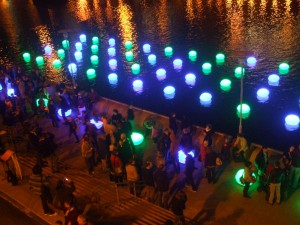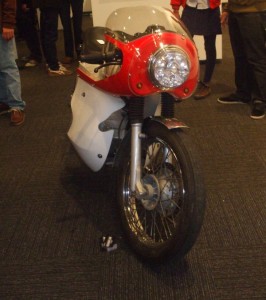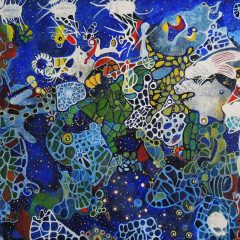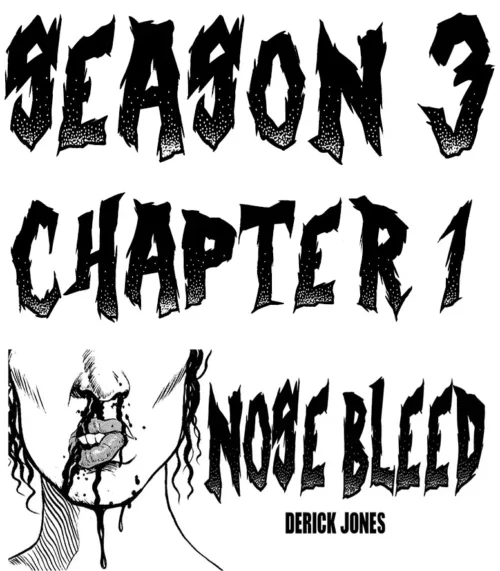I still remember being introduced to Close Encounters of the Third Kind as a child. For a long while after my first viewing of the film, the five variable notes and flashing colors of the climactic mother ship scene stuck with me. They evoked a magic redolent of youthful innocence, which later television would dissipate through endless reruns on AMC. Eventually, even Richard Dreyfuss’s eternally boyish charm could no longer salvage an image made stale with repetition. Last Friday, October 15, thanks to the Light Drift display on the banks of the Schuylkill River, I was transported momentarily back to that evocative space of light and color.

As dusk descended on the city, Philadelphians straggled towards the Schuylkill River Bank. Alone or in groups of two or three, they paused to hang over railings and snap photographs, before winding their way down the ramp between Market and Chestnut Streets. A series of 90 luminescent orbs floated like space pods on the inky river, while workers in canoes made last-minute adjustments to the cement blocks holding them in place beneath the surface.
Presented by the Mural Arts Program, Light Drift illuminated the Schuylkill Banks every evening through October 17. A part of DesignPhiladelphia 2010, the outdoor exhibition was created by J. Meejin Yoon, an Associate Professor in the Department of Architecture at the Massachusetts Institute of Technology.
“We’ve done a number of public arts projects,” remarked Eric Höweler, one of the architects on the project and Design Critic in Architecture at Harvard University. “We’re architects. But sometimes we produce as artists. There’s a fuzzy line between the two. We’re interested in cities and what makes them be urban, what makes them animated.”

Project members worked their way through the crowd, sporting t-shirts with upside-down coded diagrams of the installation. One by one, children and adults took turns sitting on concave orbs arranged in a row along the bank. The RFID (Radio-Frequency Identification) activated installation reacted to the touch of the crowd members. On the surface of the seats, custom micro controllers designed by Mark Feldmeier of MIT communicated with the orbs on the river, allowing them to shift in shades of green and blue. Ambient music, provided by WXPN, whined eerily in the background, providing arrhythmic accompaniment to the pulsating light display.
While I was taken aback at first by the uniformity of the orb arrangement, it seemed that this was another attempt by the creators to refrain from influencing the interplay of the audience by imposing pre-formed patterns. As Eric explained, “what we like to say is that it’s positive architecture. We’re excited about architecture and how it’s affected by human behavior. It’s something that you can’t control, but that’s what makes it interesting.”
Lite-Brite for all ages and science fiction made real, Light Drift added a touch of nostalgic enchantment to the banks of the Schuylkill. (Scientists might blame it on sense memory; I prefer to think of it as modern-day magic.) Although Light Drift remained on display for only one weekend, perhaps J. Meejin Yoon understood what television programmers do not: the power of beauty sometimes lies in transience.
Just a few blocks away, the night of October 15 also played host to Philly Works 2010 at Meyerson Hall at the University of Pennsylvania School of Design. Also a part of DesignPhiladelphia, Philly Works began in 2009 as a commemoration of the city’s history as a center of production. It continues to act as a means to connect and support the community of designers within Philadelphia. This year’s exhibition, organized by Alexandra Schmidt-Ullrich, Andrew Dahlgren, Kevin Greenland, Leah Grubb, and Will McHale, saw the addition of a $20 catalog as well as an online database highlighting the dozens of participants.

Interspersed throughout the lobby at Meyerson Hall, the finest examples of Philadelphia manufacturing, design, and craft squeezed into nooks and splashed bare white walls with bursts of color and creativity. Products represented every spectrum of design, from the practical to the outré. A Revolution Furniture display exhibited a collection of stools, each with a mismatched leg sticking out with the aplomb of Claudette Colbert hitching a ride. Classic rock music blared from a set of speakers handmade by Carrot Grant, while in a corner across the room a young man demonstrated an ironing board that converted into a chair.

From shoemakers to laser technology, Philly Works offered old-fashioned throwbacks alongside forward-thinking design plans. As guests cycled through the space, each bearing plastic cups filled with PBR (appropriately obtained from a beer keg – DesignPhiladelphia participants must labor for their beers), the one clear message amidst the amalgamation of enterprise was that, well, Philly works.









